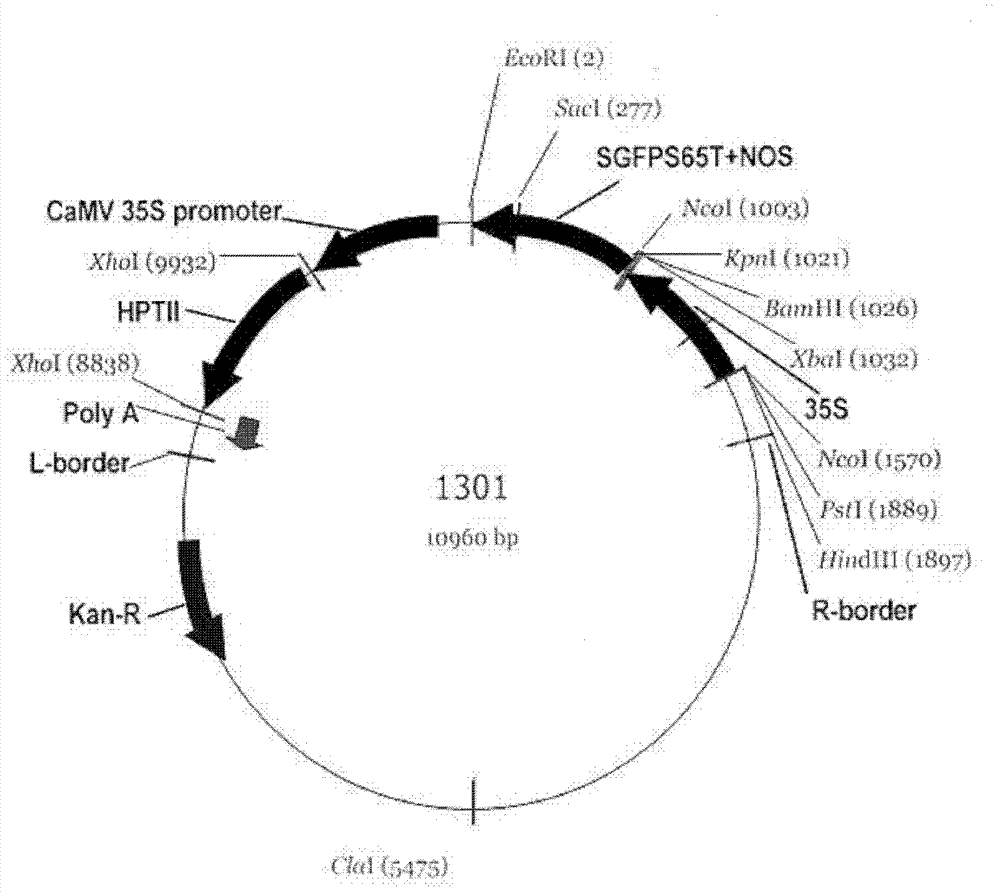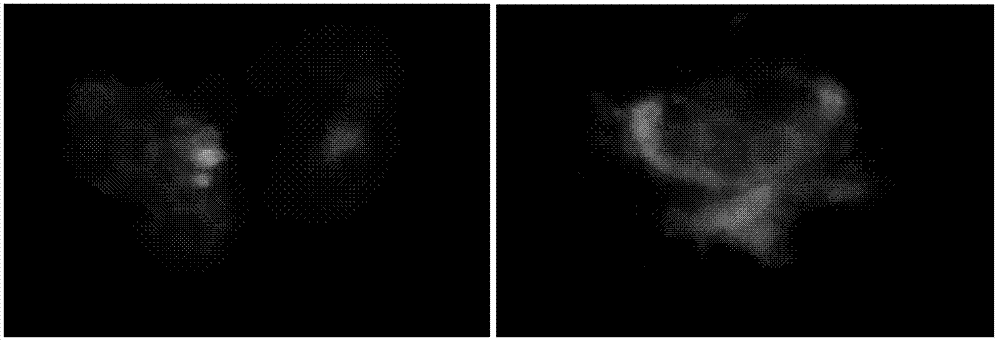Agrobacterium tumefaciens-mediated barley mature embryo callus transformation method
An Agrobacterium-mediated, callus technology, applied in the field of plant genetic engineering, can solve the problems of difficulty in controlling the flowering period of barley, time-consuming, labor-intensive, and high cost, and achieve the effects of simple and feasible separation, easy guarantee of quantity, and low pollution rate.
- Summary
- Abstract
- Description
- Claims
- Application Information
AI Technical Summary
Problems solved by technology
Method used
Image
Examples
Embodiment 1
[0059] 1), induction of mature barley embryo callus:
[0060] Select mature seeds of healthy and full-bodied barley variety Golden Promise harvested in the same year, wrap them in gauze and wash them in running water for 1 hour in an Erlenmeyer flask, cut off part of the endosperm of the seeds with a scalpel on absorbent paper, and keep only the isolated embryos (length 4-5mm), and then peel off the shell of the isolated embryos by hand and put them into 10mL centrifuge tubes (pre-sterilized). Generally, 15-20 shelled isolated embryos are placed in each 10mL centrifuge tube. On the ultra-clean bench, first pour 75% (v / v) ethanol into the centrifuge tube and shake it for 30 seconds; after pouring off the ethanol, use freshly prepared 15% sodium hypochlorite (v / v) to stand and sterilize for 15 minutes to obtain Sterilize the isolated embryos; wash the above-mentioned sterilized isolated embryos with sterile water for 2 times, each time for 3 minutes. The detached embryos were b...
Embodiment 2
[0087] The healthy and mature seeds of two barley varieties Golden Promise and Zaoshu No. 3 were selected for callus induction, isolation and subculture respectively. The steps were the same as in Example 1, but the vectors carried by Agrobacterium were different during transformation. In Example 2, the Agrobacterium strain LBA4404 was used, carrying the transformed pCambia1300 plasmid, carrying the glyphosate resistance gene driven by the maize ubiquitin promoter.
[0088] Use pcr technology to verify whether there is the target gene transferred in the transformed seedlings, as follows:
[0089] Plant regeneration is carried out after the callus is transformed, bacteriostasis and recovery culture; the steps are as follows:
[0090] Plant differentiation and regeneration:
[0091] The callus after recovery culture was transferred to the differentiation medium for plant differentiation and regeneration, and the culture conditions were high light intensity (60-80 μE m -2 the s...
PUM
| Property | Measurement | Unit |
|---|---|---|
| length | aaaaa | aaaaa |
Abstract
Description
Claims
Application Information
 Login to View More
Login to View More - R&D
- Intellectual Property
- Life Sciences
- Materials
- Tech Scout
- Unparalleled Data Quality
- Higher Quality Content
- 60% Fewer Hallucinations
Browse by: Latest US Patents, China's latest patents, Technical Efficacy Thesaurus, Application Domain, Technology Topic, Popular Technical Reports.
© 2025 PatSnap. All rights reserved.Legal|Privacy policy|Modern Slavery Act Transparency Statement|Sitemap|About US| Contact US: help@patsnap.com



